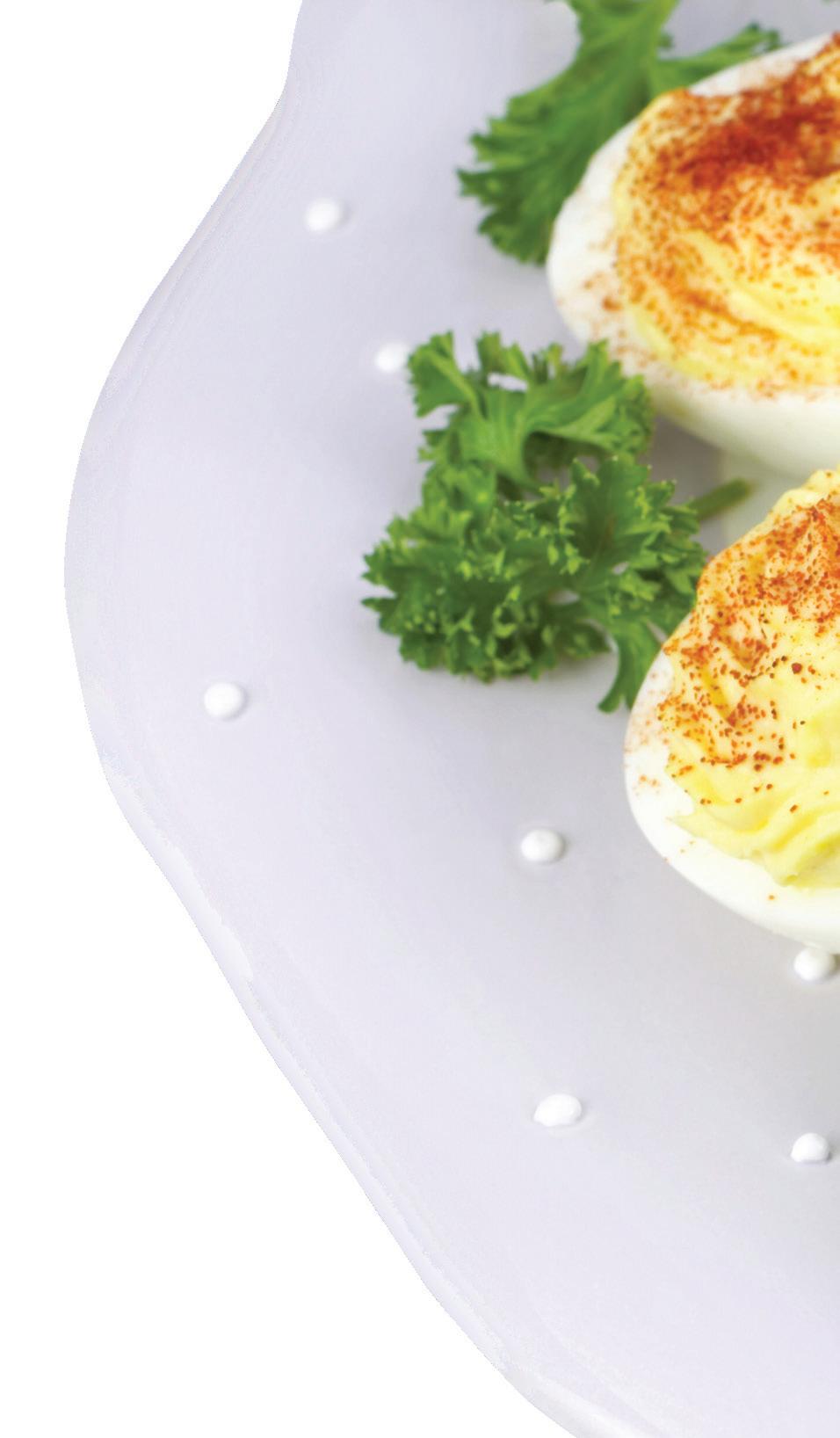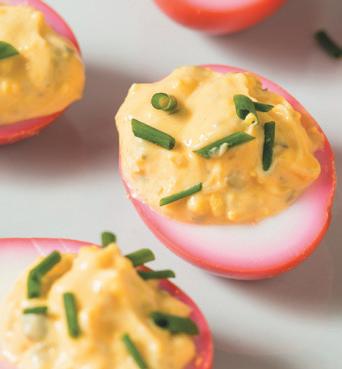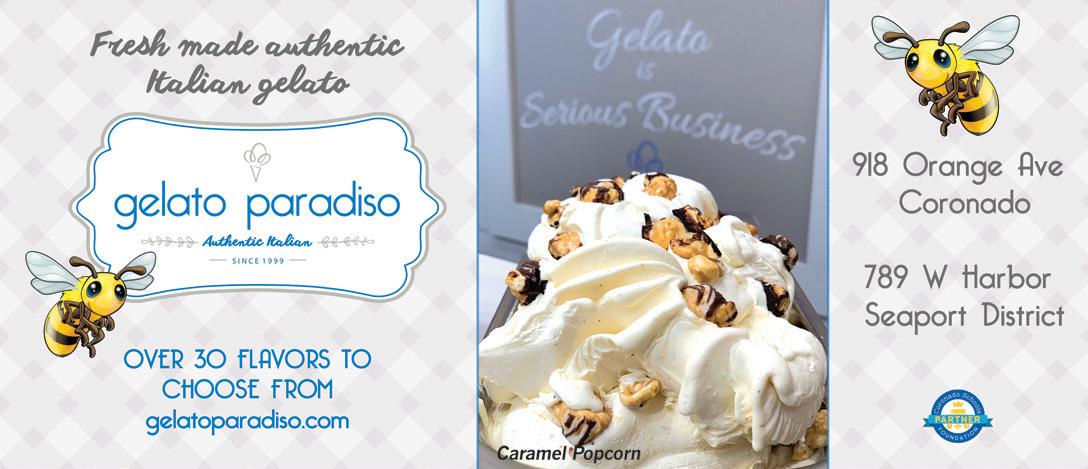
14 minute read
Crown City History
I N C O L L A B O RAT I O N WI T H H OT E L D E L C O RO N A D O & C O RO N A D O H I STO R I CA L A S S O C I AT I O N
Coronado’s Gardener
Advertisement
It’s hard to imagine Coronado without the greenery of the tree-lined streets and public parks. Much of the plant and tree life we enjoy today is the result of Coronado city gardener Louis Bandel, who devoted his life to enriching the town with horticulture in the first part of the 20th century. Louis C. Bandel was born in 1870 in Missouri. He married Ida Mae Dennison in Kansas, and the couple visited San Diego in 1900. Ida Bandel found the climate to be beneficial to her health, so the two stayed and settled in Coronado. They purchased a home and had it moved to 1050 Isabella Ave. to be closer to the ocean. It remained their home for 59 years.
In 1901, Louis Bandel became the city’s park superintendent, a position he would hold until his retirement in 1947. He helped plan parkland and was responsible for planting most of the older trees we see today in the parks and along streets. His daughter-in-law Lucille Sexton Bandel shared a story in the book Coronado We Remember: “When the city couldn’t afford grass in the parks, he obtained a donation of grass seed and then coordinated watering with firemen’s practice use of their new hose and equipment.”
Bandel had a soft spot for the local schoolchildren. For years, he grew a wall of sweet peas in front of the library between Sixth and Seventh streets. After multiple requests from children for a bouquet, the Coronado Journal reported that in 1920 “Mr. Bandel preferred not to play any favorites, so decided to give each of the 400 kiddies a nice bunch of the flowers.” He also donated bouquets of his sought-afCoronado park superintendent Louis Bandel and his wife, Ida, moved to the island in 1900. They had two children, Dorothy and Kenneth. By V I C K I E S T O N E , C U R AT O R O F C O L L E C T I O N S , C O R O N A D O H I S T O R I C A L A S S O C I AT I O N
ter flowers to the hospital at Camp Kearny and was instrumental in securing the community Christmas tree at Rotary Plaza.
The Bandels had two children, Dorothy and Kenneth. Dorothy was a favorite in Coronado social circles, but died of injuries from a car accident, three months after her Coronado High School graduation. Kenneth served in the National Guard during World War II and became a building inspector for the San Diego County’s engineering department.
Gardening was a pastime enjoyed by the family, and Ida Bandel also had a green thumb. According to her daughter-in-law, “Ida studied grafting under Kate Sessions and propagated many unusual-colored epiphyllums in her lath house.”
In 1922, the first Coronado Flower Show was a huge success thanks in part to Louis Bandel’s work. The Journal reported that “A wind-break fashioned from the branches of trees by Louis Bandel, the city’s head gardener, kept the vagrant breezes from drying up the flowers, and the canopy of leaves overhead kept out the little rays of sunshine that are popularly supposed to make delicate things of beauty wither and fade.” Bandel also served as a member of the city’s volunteer fire department and was chief for one term. He died in May 1959 at the age of 89. For his contributions to the city, the park at 10th Street and Alameda Boulevard was named after him.
April 7, 1920
PICRYL
Edward, Prince of Wales, visited on his way to Australia, anchoring his ship, Renown, off shore. Coronado resident Eugene Estoppey rowed out to greet the prince, taking about 2½ hours to make the round trip, bringing back a copper coin from an officer onboard and winning $5 from a man who bet he couldn’t get out and back. In San Diego, Prince Edward was welcomed by Mayor Louis Wilde and hailed by hundreds. The prince then took the ferry Coronado across the bay to Hotel del Coronado, where a dinner and reception were held in his honor. After spending the night at The Del, he played golf at Coronado Country Club before going back to his ship to continue his journey.

USS MIDWAY MUSEUM
The 47-year-old aircraft carrier Midway was retired from active service in a ceremony at North Island Naval Air Station. It remained in storage in Bremerton, Washington, until 2003, when it was donated to the San Diego Aircraft Carrier Museum organization. It opened as the USS Midway Museum in June 2004 and has become one of the most visited historical naval ship museums in the world. April 11, 1992
Roland ‘Mac’ McNeely became the first mayor elected directly by the voters of Coronado. From 1890 to 1926 Coronado was governed by a board of trustees who appointed a president, and from 1926 to 1972, the city council appointed a mayor. April 13, 1972
The Great White Fleet, under the command of Rear Adm. Robley “Fighting Bob” Evans, arrived in San Diego, one of 20 port calls around the globe in 14 months during one of the largest peace-time deployments ever seen. The Fleet, consisting of 16 white, steel-hulled, steam-powered ships, anchored off Hotel del Coronado in a mooring area called Coronado Roads. Boaters in small craft surrounded the ships to get a closer look and welcome the 14,000 sailors and Marines to San Diego. “Flower committees” threw blossoms at the ships and “fruit committees” filled up the men with lemonade. The Del hosted a formal naval ball, and Coronado residents welcomed sailors into their homes during the festive four days. April 14, 1908 LESLIE CRAWFORD COLLECTION

Over 700 Coronado first and second graders lined up for their first of three inoculations of Jonas Salk’s polio vaccine. Local doctors Mark Rhea, Charles Eaton, Ethel Waters and William Hamby administered the vaccine in room 64 at Coronado Junior High school. The vaccination was two days after the 10th anniversary of the death of President Franklin D. Roosevelt, who had been afflicted with polio and was founder of the March of Dimes. April 14, 1955

The Coronado Beach Company, in its desire to make the island city the most beautiful spot in the world, announced that it would give every resident enough marguerite plants to form a border around their property. Every resident was expected to assist the Beach Company in their good work. April 18, 1889
Lemon Variety Turned Sour
B y G I N A P E T R O N E , H E R I T A G E M A N A G E R , HOTEL DEL CORONADO
Hotel Del Coronado founder Elisha Babcock, Jr. owned a ranch in San Diego, which probably helped su pply the hotel’s fresh produce. Babcock’s ranch grew apples, pears, peaches, apricots, nectarines, olives, oranges, pomegranates, figs, walnuts, blackberries and plums.
Ever the visionary, Babcock explored the possibility of growing other produce such as sugar beets and “cocoa nuts.” He was also a big promoter of the Bonnie Brae lemon.
In 1871, Chicago music publisher Hiram M. Higgins settled on 76 acres in Bonita and created the Bonnie Brae lemon, a thinskinned, oblong and seedless fruit. Within six years, Higgins planted more than 2,000 trees on his property, and the lemon variety quickly became famous. It
garnered attention at the Los Angeles Citrus Fair in 1880, “took the premium award at the World’s Fair in New Orleans” in 1885 and was acclaimed at the 11th State Fruit Growers Convention held in National City in 1889.
After the early success of his groves, Higgins began selling cuttings of his Bonnie Brae lemon trees to other growers and there was speculation that the lemon – mistakenly thought to be a cross with a lime, which Higgins denied – would revolutionize the industry. A group of growers bought some Bonnie Brae groves and created the Sweetwater Fruit Company. Babcock was at the ready to promote the lemon to the outside world. In 1891, he began shipping boxes of Bonnie Brae lemons to railroad executives, soliciting their feedback. “The juice is about twice as strong as that of any other lemon, and that one lemon contains nearly twice the amount of juice of any other lemon of the same size,” he wrote on Feb. 19, 1891. “I have believed ever since I came to this country, that the Bonnie Brae lemon, if it could be cured properly and handled, will make a greater reputation for the country around San Diego than the Riverside navel orange did for Riverside. See if some plan cannot be evolved to introduce this lemon in the East.”
Because of the lemon’s thin skin, it tended to split easily, and Babcock worked to develop a way to cure them. “The Bonnie Brae lemon will keep equal to any other lemon if plucked from the tree and then allowed to dry on shelves until the skin becomes tough,” he wrote in March 1891. Despite years of effort, a method of effectively shipping the lemon never materialized.
Higgins died in 1897 at the age of 77, and the Bonnie Brae Ranch was sold. A drought around 1912 followed by a freeze in 1913 and a flood in 1916 practically demolished the citrus industry. In 1918, then Bonnie Brae Ranch manager C.J. Scott wrote, “But owing to this very thin rind and its habit for splitting, the Bonnie Brae lemon did not prove to be a good commercial variety. I have left but one tree of this variety standing as a memento to the famous lemon.”
Today, no known Bonnie Brae trees exist. BIODIVERSITY HERITAGE LIBRARY

April 1, 1948
The Hotel del Coronado had a new owner – for a day. Robert A. Nordblom of New York and Boston immediately sold the hotel to Barney Goodman of Kansas City for $1,700,000. Barney Goodman took possession of the hotel on April 2, 1948.
DENTISTRY
IMPLANT
RESTORATION
S N O R E
A P P L I A N C E
THERAPY
E M E R G E N C Y
C A R E
AVA I L A B L E
A guy with five kids knows what it means to be a family dentist.
Michael B. Copp, D.D.S ( 619 ) 435-3185

120 C Avenue, Suite 150, Coronado Between First & Second on C www.drcopp.com



devilshly DECADENT
Surprising ingredients give traditional recipe new twist
By CLYDE VAN ARSDALL IV E ggs are a big part of spring celebrations all over the world. In ancient Rome, eggs symbolized new life and reproduction. In some Asian cultures, the egg is a symbol of luck and wealth. Easter and Passover both feature eggs as part of their celebration. The tradition of coloring eggs and giving them as gifts in spring predates Christianity.
A classic chef’s hat, called a toque, has 100 folds, which are said to symbolize the number of ways a chef can prepare an egg. I can’t honestly say if that is true, but of all the ways to prepare an egg, deviled eggs are my favorite.
Deviled eggs are back, and they aren’t your grandmother’s recipe. Restaurants are putting kicked up varieties on the menu. Leroy’s in Coronado offers them laced with mango chutney and garam masala, and at the Neiman Marcus Café, we serve devil eggs with green onion oil and bacon, calling them “Green Eggs and Ham.”
The variations of deviled eggs are endless and so much fun to create. What makes an egg deviled? The term dates to the 18th century and refers to something spicy or piquant. Deviled eggs are prepared with mustard, pepper or even a bit of hot sauce.
The most common ingredients mixed with the yolks are mayonnaise and some type of mustard. Then a wide variety of other ingredients may be added. My goto mustard is simple yellow mustard, but I have used mustard powder, whole grain




mustard, Chinese hot mustard, even pickled mustard seeds and every combination of the aforementioned.
Mayonnaise can vary as well. Hellmann’s is popular for a savory flavor, or try Japanese Kewpie mayonnaise for a sweeter taste. In the South, Duke’s is king. I was raised on it. Duke’s has more egg yolks than regular mayonnaise and no added sugar, making it very tangy. Once the yolks are mixed with mustard and mayonnaise, I add a tablespoon of softened butter to make the mixture even creamier. Then the fun begins. You can add a dash of Worcestershire, a spoonful of sweet pickle relish, chopped pickles, a touch of bacon grease or bacon crumbles – you name it.
A variation is made with hard boiled eggs that have been marinated in beet juice. The egg whites will turn bright pink to purple, which goes great with the yellow filling. Lastly, you’ll need to garnish your eggs. On the East Coast, Old Bay Seasoning is popular. In the South, paprika is the preferred finishing spice. I love garnishing with something that adds a bit of texture: a small piece of bacon, a sliced pickled jalapeño or a green olive slice. I have also used caviar or pickled mustard seeds to finish things off on a decadent note.
Deviled eggs can be made ahead of time. If you keep them more than a day, store the egg whites and the filling separately in airtight containers for up to two days and then pipe them when needed.
Deviled eggs are here to stay for a while, so be creative and have some fun with them.
• Clyde Van Arsdall IV is executive chef and general manager of the Neiman Marcus Café.
6 hardboiled eggs, peeled, chilled and cut in half 2 tablespoons mayonnaise 2 tablespoons green onion oil (see recipe) 1 teaspoon yellow mustard 1 tablespoon softened butter 1 tablespoon chopped bacon
1. Heat the bacon fat in a small pot over high heat. When the oil is shimmery and hot, add the green onions, garlic, shallot and ginger. Be careful, the water content will cause the oil to bubble. Remove the pot from the heat and stir in the sesame oil. Salt to taste. 2. Remove the yolks from the eggs and place in a bowl. Mash with a fork until the yolks are crumbly. Add green onion oil, mayonnaise, mustard, butter and chopped bacon and Sriracha for added kick, if desired. Stir and taste. If you like more green onion oil, add it. Fill egg-white halves and top with freshly ground pepper. (If you don’t have a pastry bag to pipe in the mixture, you can use a plastic bag with a small piece of one corner cut off.) 3. Garnish each egg with a small piece of bacon. Green Onion Oil (recipe by David Chang) (Makes more than you need, but this stuff is great on so many things)
Green onions thinly sliced, whites and green (¾ to 1 cup) 1 clove garlic, minced 1 small shallot, minced 1 small knob of ginger, minced 2 tablespoon bacon fat 2 teaspoons sesame oil ¼ cup chopped bacon salt and pepper to taste Sriracha to taste
Perfect Hard-Boiled Egg The perfect deviled egg starts with a perfectly hard-boiled egg. Bring 3 inches of water – enough to cover the eggs – to a boil in a large saucepan. Carefully add eggs and cook 12 minutes, turning the heat down to a simmer. Transfer to a bowl of ice water using a slotted spoon. Let cool for 5 minutes then peel.

Pickled Egg White Marinade
1 jar (16 oz.) beets 1 cup water 1 cup distilled white vinegar

Drain beets, reserving juice (about 2/3 cup). Set beets aside for another use. Combine beet juice, water and vinegar. Arrange egg whites cut-side down in a shallow container. Pour marinade over eggs and refrigerate several hours or overnight, turning occasionally. Remove egg whites from marinade, pat dry with paper towels and pipe or spoon in yolk mixture.














